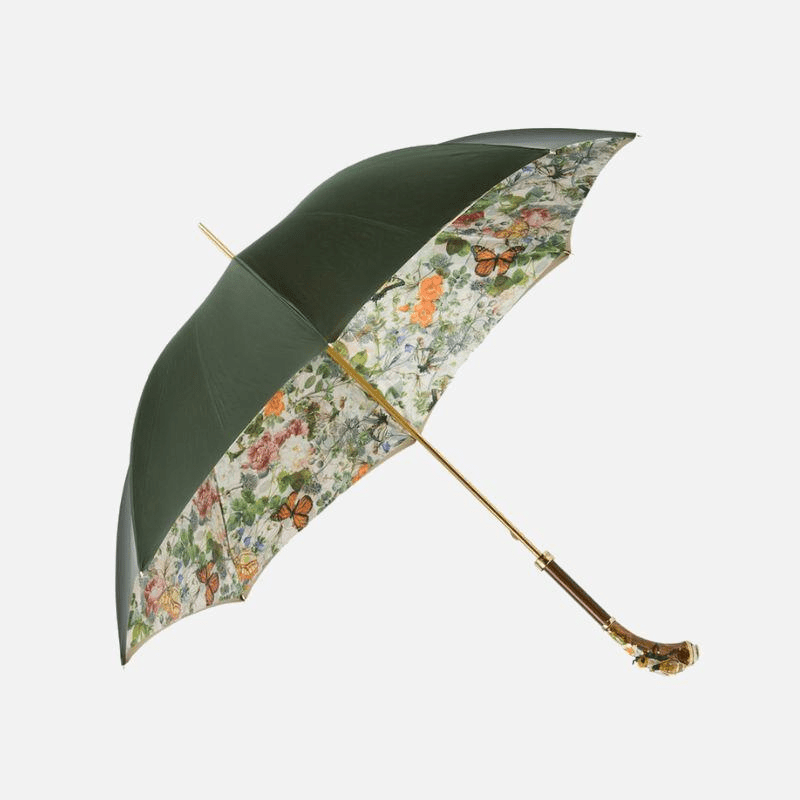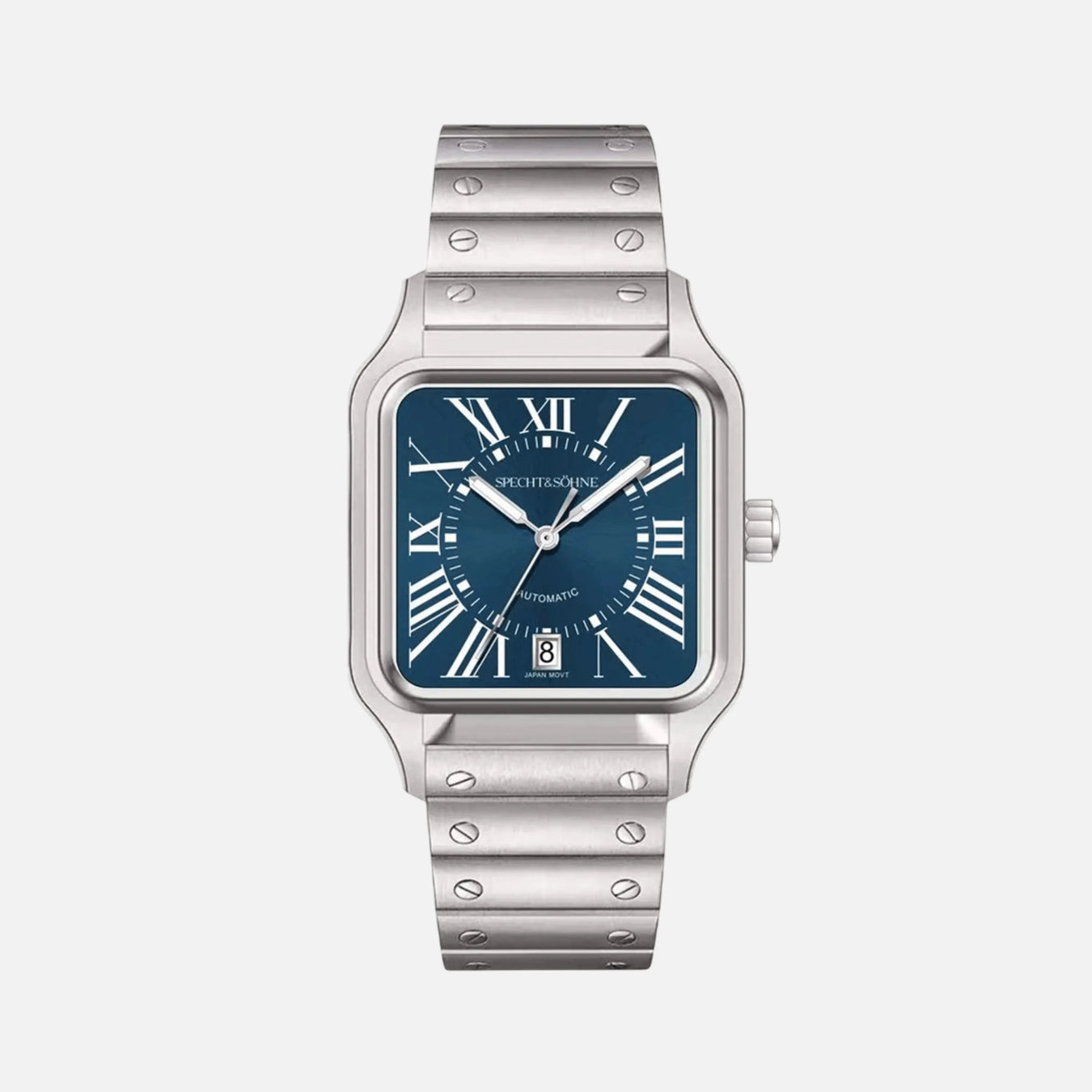
Handmade Wonders: Why Unique Artisanal Goods Are Worth the Investment
Introduction to the Value of Handcrafted Artisanal Goods
In an increasingly mass-produced world, the allure of handcrafted artisanal goods endures, primarily due to their intrinsic value. These items are not mere objects; they are the tangible manifestations of an artisan’s passion, skill, and creativity. Each piece tells a story, exuding a sense of uniqueness that machine-made products cannot replicate.
Crafting by hand requires a level of attention and care that is evident in the final product. The artisan invests time and emotion into each creation, ensuring quality that often surpasses that of factory-made goods. This meticulous crafting process results in unparalleled durability, meaning that these items do not just serve their immediate purpose but can be treasured for generations.
Investing in handcrafted goods supports small-scale artisans and preserves traditional craftsmanship. Consumers become patrons of the arts, fostering a sustainable ecosystem that allows artisan skills to thrive and be passed down through generations. Moreover, these purchases often directly benefit the makers and their communities, contrasting starkly with the impersonal nature of purchasing mass-produced goods.
The value of artisanal goods extends beyond mere functionality. They represent a commitment to ethical consumption, as handcrafted goods often embody principles of fair trade and responsible sourcing. By choosing handcrafted items, one advocates for the environment and for equitable economic practices.
Handcrafted artisanal goods offer a sensory experience that mass production cannot match. The textures, scents, and visual nuances of these products can enrich daily life, making routine experiences feel special. Ultimately, these goods are worth the investment as they offer singular beauty, enduring quality, and a conscious choice toward a more sustainable and equitable future.
The Artisan Ethos: Passion and Craftsmanship Behind Each Creation
The cornerstone of artisanal goods lies in the unwavering dedication and passion of the craftspeople who create them. An artisan’s work is an intimate process, characterized by meticulous attention to detail, and a deep-seated reverence for the materials and techniques used. These creators do not simply fashion items for consumption; they weave a narrative of tradition, innovation, and personal expression into each piece.
Artisans approach their craft with a mindset that transcends mere production. They engage in a labor of love, often employing techniques passed down through generations, while also embracing contemporary methods to further refine their work. This results in:
- Authenticity: Each item bears the unique signature of its maker, an assurance of its singular origin.
- Quality: The use of high-caliber materials and time-honored skills results in a level of quality that mass-produced goods seldom achieve.
- Sustainability: Artisanal production typically involves environmentally conscious practices, honoring the earth as much as the end consumer.
The personal investment artisans make in their work fosters an incomparable level of quality. They are not just producing; they are imparting a piece of themselves into every creation. This is evident in:
- The precision of the craftsmanship.
- The innovation in design that still respects tradition.
- The perseverance to maintain high standards despite the time-intensive processes.
The essence of the artisan ethos is most palpable when one holds an artisanal creation. It is more than an object; it is a testament to the passion and craftsmanship that only human hands, guided by a fervent heart and an expert eye, can achieve. This commitment to excellence is the defining hallmark of authentic artisanal goods, and it justifies their status as treasures worthy of investment.
Material Matters: The Premium Quality of Handmade Products
Handmade products stand in a league of their own, primarily due to the high-quality materials that artisans select for their crafts. When it comes to creating their work, artisans show an unparalleled commitment to quality that is seldom matched by mass-produced goods. This dedication to utilizing superior materials results in finished products with a level of distinction and durability that is both seen and felt.
- Mindful Material Selection: Artisans often choose sustainable, ethically sourced materials, ensuring their products are as good for the planet as they are for the consumer. From organic cotton to recycled metals, handmade goods frequently boast materials with integrity.
- Longevity and Durability: The attention to detail in the selection and use of high-grade materials means these products are made to last. Unlike items that prioritize cost-savings over quality, handmade products are less likely to break or deteriorate quickly.
- Superior Craftsmanship: The skilled hands behind handmade items transform quality materials into products with enhanced performance and aesthetic appeal. This craftsmanship guarantees a unique, one-of-a-kind result that is increasingly rare in an age of automation and standardization.
- Authenticity: The quality of materials used in artisanal products not only speaks to the item’s longevity but also to its authenticity. When materials are selected for their excellence, each piece tells a story of where it came from and who made it.
In a marketplace often flooded with disposable, low-quality merchandise, the premium quality of handmade products offers a meaningful alternative. Investing in these goods not only supports the artisans behind them but ensures that one is acquiring an item that stands out for its superior quality and offers lasting value, functionality, and beauty.
A Celebration of Cultural Heritage and Traditional Techniques
In a world often dominated by mass production and automation, the allure of handmade artisanal goods presents a resonant counter-narrative that champions uniqueness, human ingenuity, and a connection to lineage. Each piece reflects the cultural heritage of the artist or craftsperson, providing a tangible bridge to the customs, stories, and practices that form the mosaic of human civilization.
Traditional techniques that have been passed down through generations represent more than just a methodology for creation; they are part of a living history that artisans keep alive with each stitch, carve, or brushstroke. When consumers invest in these unique goods, they are not merely purchasing a product—they are supporting:
- The sustenance of age-old craft traditions otherwise at risk of fading into obscurity
- The empowerment of communities where these crafts form an economic backbone
- The continuation of environmentally sustainable practices inherent in many traditional crafts
These goods, often made from local materials, echo the specificities of place and environment, underlining the connection between local ecosystems and cultural expression. Artisans often utilize resources that are responsibly sourced and processed, honoring both their craft and the earth from which their materials are derived.
By choosing to invest in these cultural gems, enthusiasts do more than just decorate their lives and homes; they help ensure that the diverse tapestry of global heritage continues to thrive. They enable craftspersons to maintain their dignity, autonomy, and artistic expression in an ever-globalizing world, fostering a legacy that will inspire and educate future generations.
Customization and Personalization: The Luxury of Unique Goods
In a society brimming with mass-produced items, the allure of customization and personalization is undeniable. Unique artisanal goods offer discerning consumers the luxury of tailoring items to their exact preferences, carving out a niche of exclusivity and individual expression. This bespoke approach extends beyond mere aesthetics; it encompasses a profound connection between the artisan and the patron, turning every piece into a dialogue of creativity and personal narrative.
The Value of Customization
- Tailored to Fit: From size specifications to design modifications, custom items are crafted to suit the buyer’s needs, ensuring a perfect match with their lifestyle and taste.
- Emotional Significance: Personalized goods often hold deeper sentimental value, as they are frequently associated with special occasions or the realization of personal visions.
- Unique Gifts: Offering a customized item can make for a remarkable and thoughtful gift, demonstrating effort and consideration that off-the-shelf products cannot match.
The Allure of Personalization
- Identity Expression: By personalizing goods, individuals can express their identity, showcasing their flair and personal brand through the unique features of their chosen items.
- Crafting Stories: Each personalized piece tells a story; it can reflect a person’s journey, celebrate milestones, or embody aspirations, thus enriching its intrinsic value.
- Exclusivity: Owning something personalized is akin to possessing a piece of the artisan’s time and expertise, a luxury in a world of ubiquity.
In summary, the trend towards personalized and customized artisanal goods is reflective of a growing desire for items that not only stand out aesthetically but also resonate on a personal level. This investment in unique goods is more than a purchase—it’s a patronage of the arts and a statement of the importance of individuality in a world of mass-produced uniformity.
Sustainability and Ethical Production in Artisanal Commerce
The movement toward sustainable and ethically produced goods has never been more critical than in today’s rapidly industrializing world. Artisanal commerce stands at the forefront of this shift, emphasizing not only the uniqueness of handmade items but also their adherence to eco-friendly practices and fair labor standards. The artisans involved in creating these items are often deeply connected to their local environments, drawing inspiration from and utilizing resources that are natively available and renewable. This intrinsic link to their locale instills a sense of environmental stewardship, ensuring that production processes have a minimal ecological footprint.
Furthermore, the ethical production of artisanal goods is predicated on fair compensation and working conditions for the creators. Unlike mass-produced items that may come from factories with questionable labor practices, artisanal goods generally assure buyers that artisans are receiving a sustainable wage. This economic empowerment contributes to higher standards of living and allows for the proliferation of skilled craftsmanship.
- Attention to detail and slower production rates in artisanal commerce often mean more durable goods, reducing waste and the need for frequent replacements.
- Many artisans also employ age-old techniques that circumvent the need for modern, energy-consuming machinery, further solidifying the sustainability of their craft.
- The use of locally sourced materials not only reduces the carbon footprint associated with transportation but also supports local economies and biodiversity.
By opting for artisanal products, consumers actively participate in a system that values both the environment and human rights. In doing so, they invest in a circular economy that prioritizes lasting value over disposability—a hallmark of both sustainability and ethical production.
Economic Empowerment Through Supporting Local Artisans
Investing in artisanal goods goes beyond the mere aesthetic appeal and quality; it has a profound impact on the economic empowerment of local artisans. These craftspeople often hail from communities where employment opportunities are scarce, and traditional forms of craftsmanship serve as critical sources of income. By choosing to purchase handmade items, consumers actively participate in a cycle of empowerment that sustains livelihoods and fosters economic independence.
Artisans typically reinvest their earnings back into their communities, creating a multiplier effect. The benefits are palpable, including the promotion of entrepreneurship and the creation of supportive ecosystems for small businesses. In regions where artisans are supported, there is often:
- A boost in local employment opportunities, as successful artisans may hire neighbors and family members.
- Encouragement for others to learn and preserve traditional skills, ensuring they are not lost to future generations.
- Improved local infrastructure and education, as artisans are more likely to use their income to enhance their community.
Furthermore, the direct support of local artisans bypasses the need for intermediaries, ensuring that a larger portion of the revenue stays with the creators themselves. This model contributes to fairer compensation for their work, which can elevate their standard of living and enable them to invest in improving their craft.
Additionally, supporting local artisans can lead to the development of a more diversified and resilient local economy less susceptible to external shocks. This is particularly valuable in regions where the local population may be heavily reliant on a narrow range of economic activities.
In essence, patronizing local artisans is an investment not only in unique handcrafted goods but also in the economic vitality and sustainability of communities where these artisans live and work.
The Longevity and Durability of Handmade Items
Handcrafted items often stand the test of time, transcending the life span of mass-produced goods. Craftsmen invest substantial attention and time in each piece, selecting robust materials that ensure longevity. These items are typically more durable due to several reasons:
Quality Materials: Artisans have the liberty to choose high-grade, local, or specialty materials that commercial manufacturers might avoid due to cost constraints.
Expert Craftsmanship: The skills passed down through generations contribute to a superior construction that withstands wear and tear.
Repairability: Handmade goods are often easier to repair due to their unique construction and the availability of artisanal knowledge for maintenance.
Sustainable Production: Artisans are more likely to use sustainable practices that result in less waste and higher quality products.
Due to their enduring nature, these artisanal goods can become family heirlooms, holding not just monetary but sentimental value as well. While the initial investment may be higher compared to more ephemeral, machine-made items, the extended lifespan of handmade products ensures a better long-term value. Not to mention, supporting craftsmen directly benefits local economies and preserves traditional techniques.
One must consider the environmental impact, too; since these items last longer, there’s less need for frequent replacements, thus reducing the consumer footprint. Time and again, handmade items prove their worth not just as individual pieces of art but as sustainable choices woven into daily life.
Handmade vs Mass-Produced: Comparing Investment Value Over Time
When evaluating the potential of an item to hold or increase in value over time, it’s essential to understand the distinct differences between handmade and mass-produced goods.
Handmade items are often crafted by a skilled artisan who invests considerable time and energy into each piece. The uniqueness of each handcrafted item usually means it cannot be precisely replicated, contributing to its scarcity and potential to become more valuable over time. Collectors and enthusiasts are often willing to pay a premium for pieces that tell a story or showcase exceptional craftsmanship, increasing their investment value.
On the other hand, mass-produced items, manufactured quickly and efficiently in large quantities, rarely hold the same investment potential. The market is typically saturated with identical items, which drives down individual value. Over time, mass-produced goods tend to depreciate, as newer models or trends emerge.
- Scarcity and Exclusivity: Handmade items are often produced in limited quantities, and their bespoke nature can result in increased demand and higher resale prices.
- Craftsmanship and Quality: The level of craftsmanship in handcrafted goods usually surpasses that of mass-produced items. High-quality materials and attention to detail can lead to longevity, both in terms of style and physical condition.
- Provenance and History: Artisan items often come with a history or back story that enhances their appeal. Provenance can play a significant role in investment value, as a well-documented origin story can add a layer of desirability.
Investment value in handmade goods is not guaranteed, but the potential for appreciation is generally greater compared to mass-produced items. Over time, as disposable consumer goods come and go, handcrafted items can maintain or increase their value, standing out as wise investments for discerning collectors.
Collectability and the Appreciative Aspect of Artisan Works
When one considers the purchase of artisanal goods, the concept of collectability often surfaces as a compelling factor. Handcrafted items come with an inherent rarity—their very nature as hand-made confers uniqueness, as no two pieces can be precisely the same. This scarcity is not lost on collectors and enthusiasts, who derive satisfaction from owning something not just unique, but often representative of a particular craftsperson’s skill, style, and cultural context.
The collectability of artisan works is intertwined with their appreciative aspect. Owners of handmade items tend to value these objects for their aesthetic qualities and the human touch behind them. These are not products that emerge from impersonal production lines, but are the amalgamation of time, effort, and personal expression. Here are several reasons why collectability and appreciation play a key role in the value of artisan goods:
Signature of the Artisan: Each artisan leaves a unique mark on their creations, which can increase the desirability and hence, the collectability of their works.
Storytelling through Objects: Artisan works often carry with them stories of the culture, traditions, and the individual creator, making them not just objects of beauty but of narrative as well.
Potential Increase in Value: Over time, certain handmade goods may become rarer and more sought-after, potentially increasing their monetary value in addition to their sentimental worth.
Emotional Investment: The appreciation for the craftsmanship, time, and narrative can foster an emotional connection, enhancing the satisfaction of adding such an item to one’s collection.
Investing in artisanal goods means engaging with the art on a level beyond the mere functional; it is to acknowledge and celebrate the story behind each piece, the human skill invested, and the cultural tapestry it represents. The collectability of these items is not only in potential economic benefit but in the enrichment they bring into the lives of those who hold them.
Emotional Connection: The Intangible Worth of Handmade Goods
In the world of mass production, the allure of handmade goods resonates on an emotional level that is often underestimated. These artisanal creations are much more than mere objects; they are the embodiment of the maker’s time, dedication, and personal story. Each handmade item is instilled with the essence of its creator, offering a unique narrative that creates an intangible worth that cannot be replicated by machine-made items.
The emotional investment begins from the moment of conception. Artisans pour their vision and personal experiences into their craft, making each piece a reflection of individuality and creativity. Handmade goods are not churned out on assembly lines but are born from a meticulous process where every stitch, cut, or brush stroke is deliberate and carries significance. The owner of such a piece is not just purchasing a product but a tangible piece of the creator’s life and passion.
Furthermore, the attention to detail in these goods often translates into superior quality and longevity, deepening the emotional attachment over time. This attachment grows as the item weathers life’s experiences alongside its owner, often becoming a cherished heirloom that holds memories and sentiment far beyond its physical value.
Artisanal goods promote a conscious connection between the maker and the buyer, a dialogue that fosters appreciation and understanding. By choosing handmade:
- Consumers enter a more intimate and rewarding marketplace.
- They become patrons of the arts and guardians of traditional craftsmanship.
- They also contribute to the preservation of cultural heritage and the perpetuation of personal craftsmanship.
Ultimately, the intangible worth of handmade goods lies in their ability to elicit feelings and forge bonds that surpass the practical utility of the items themselves. This is the beauty and enduring value of the emotional connection that comes with owning something genuinely handmade.
How to Identify and Evaluate Artisanal Goods for Investment
Investing in artisanal goods requires a discerning eye and an understanding of certain key characteristics that denote quality and potential for appreciation. When identifying and evaluating these handmade treasures, consider the following criteria:
Craftsmanship
The level of craftsmanship can often be determined by examining the precision, skill, and care with which the item has been made. Look for:
- Attention to Detail: Are the finishes meticulous? Are decorative elements well-executed?
- Quality of Materials: Are the materials used durable and authentic?
- Construction: Is the item solidly built and functionally sound?
Provenance
Knowing the history and origin of an artisanal item can significantly impact its value.
- Artist Reputation: Research the artist’s background, including awards, exhibitions, and recognition within the craft community.
- Heritage: Consider whether the item represents a cultural tradition or a region known for its craftsmanship.
Uniqueness
Artisanal goods derive much of their value from their uniqueness.
- Design: Look for originality in design that sets the item apart from others.
- Limited Production: Often, the fewer pieces there are, the more valuable they become.
Market Trends
Staying informed about the latest trends can guide you in selecting items that are in demand.
- Demand: What kinds of artisanal goods are currently coveted by collectors and the public?
- Niche Markets: Sometimes specific niches can yield a higher investment return due to a dedicated collector base.
Condition
The state of the item is paramount when considering its investment potential.
- Preservation: Has the item been well-maintained?
- Restoration: Poor restoration can diminish value, whereas high-quality restoration may enhance it.
Documentation
Authenticity certificates, original purchase receipts, or any other paperwork that can prove the item’s legitimacy will bolster its value.
- Track records of previous sales or auctions of similar items can provide insight into an object’s market value.
By meticulously examining these factors, one can make an informed decision about investing in artisanal goods, ensuring the acquisition’s both an aesthetic and financial asset.
Caring for Your Artisanal Goods: Tips for Long-Term Preservation
Artisanal goods, with their unique charm and quality, require thoughtful care to ensure their longevity. Preserving these treasures not only maintains their appearance but also upholds the values of craftsmanship they embody.
Avoid Direct Sunlight and Extreme Temperatures: Consistent exposure to direct sunlight can fade and damage materials. Keep your artisanal goods in a place where the temperature is controlled and away from harsh sunlight.
Proper Cleaning Methods: Understand the material of your artisanal piece to determine the appropriate cleaning method. For example, hand-painted items should be gently dusted, while certain textiles may require dry cleaning or specialized washing instructions.
Mindful Handling: Always handle your goods with clean hands and avoid rough usage. If an item is particularly delicate, such as pottery or glasswork, ensure that it is stored in a stable place where it is less likely to be knocked over.
Protective Treatments: Some items, like leather or wood pieces, may benefit from conditioners or oils that protect them from drying out and cracking. Always use products that are specifically designed for the type of material you are treating.
Storage Solutions: When not on display, store your items in a clean, dry place. Acid-free tissue paper can prevent tarnishing on metals and wrap textiles to protect them from dust and pests.
Remembering these tips will not only keep your artisanal goods in pristine condition but also honor the time and skill invested into creating each unique piece. By consciously preserving these items, owners ensure that the story and tradition of artisanal craftsmanship continue to be appreciated for years to come.
Conclusion: The Enduring Appeal of Handmade Wonders
The persistent allure of handmade goods goes beyond a simple preference for the aesthetic. It taps into a deeper connection to the narratives, meticulous skill, and the soul of artisanship embedded in each piece. Handmade goods represent a counterswing to the ubiquity of mass-produced merchandise, promising not only a distinct identity but also a commitment to sustainability and ethical consumption.
These artisanal creations are cherished for their authenticity, as no two pieces are exactly alike. This uniqueness becomes a form of luxury in an era where exclusivity is often diluted by large-scale duplication. The hand of the maker ensures a quality and attention to detail that machines cannot replicate, making each investment in handmade goods not just a purchase but an heirloom-worthy addition to one’s life.
Moreover, by choosing handmade, patrons support independent artisans and their communities, fostering traditional skills and providing economic empowerment. This reciprocal relationship enriches both the buyer’s experience and the creator’s livelihood, creating a cycle of appreciation and support.
- Artisanal goods are steeped in culture and heritage, often reflecting the history of a region and the personality of its people.
- These objects showcase human imperfection and, through this, achieve a beauty that resonates with our inherent desire for connectivity and storytelling.
The value of handmade objects lies in their testament to craftsmanship, their environmental consciousness, and the joy of owning a piece that carries a human touch. As long as consumers seek out authenticity, sustainability, and craftsmanship, the appeal of handmade wonders will endure.






